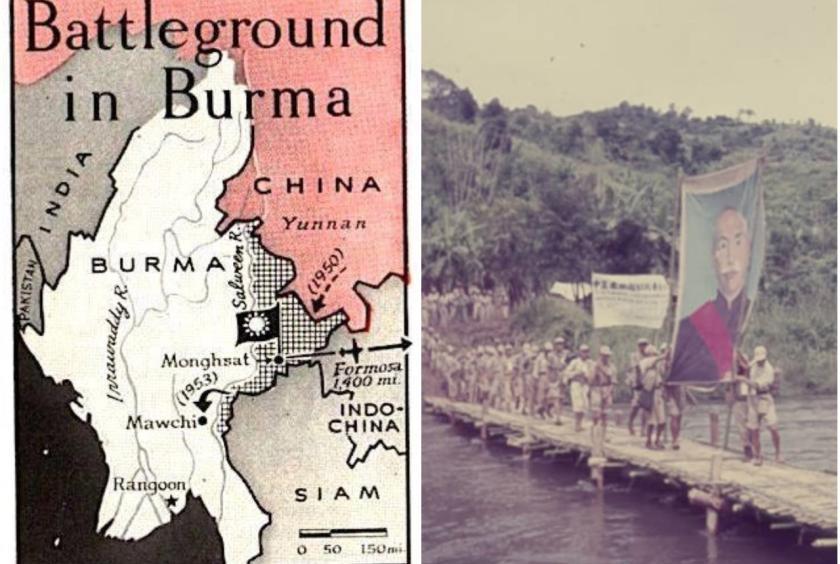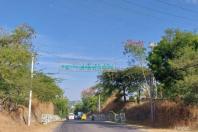Burma Act
The US Senate passed the National Defense Authorization Act, or NDAA, carrying provisions that will support democracy activists in Myanmar, on December 16, 2022, the Reuters news agency reported.
The NDAA including a Burma Act designed to help with Myanmar’s democracy cause was submitted by the US House of Representatives on December 8 and approved by the US Senate. It only needs the signature of President Joe Biden to be ratified into law.
The Burma Act bill includes allotting cash assistance for five years with US$50 million per year in support for the pro-democracy movement in Myanmar. It also includes US$220 million in humanitarian aid for Myanmar in 2023. Another provision included in the bill is to provide technological support and materials that cannot cause human death to the organizations fighting for democracy, including the National Unity Government (NUG), People Defence Force (PDF) and ethnic armed organizations (EAOs).
When the NDAA comes into effect in 2023, Myanmar will receive aid from 2023 to 2027.
The US previously provided such aid to Syria in 2013 to overthrow President Assad.
When Burma Act comes into force, it means that the US has gotten involved with waging war in Myanmar. It will be apparent that it has waged a proxy war against Myanmar. Even though the text “the US will provide materials that cannot cause human deaths," by saying that it will provide support for the armed organizations means the US is essentially getting involved with the wars in Myanmar.
In a bid to control China regarded as its main rival, the US has long been waging war in various forms. They are class wars, CIA’s secret wars, and proxy wars.
Proxy war
A proxy war is an armed conflict between two states or non-state actors, one or both of which act at the instigation or on behalf of other parties that are not directly involved in the hostilities. In order for a conflict to be considered a proxy war, there must be a direct, long-term relationship between external actors and the belligerents involved. The aforementioned relationship usually takes the form of funding, military training, arms, or other forms of material assistance which assist a belligerent party in sustaining its war effort.
The term “proxy war” is common in academic research and papers related to international relations.
Separate implementation of soft power and hard power proved to be unsuccessful in recent years. Accordingly, great failures in classic wars increased tendencies towards proxy wars. Since the early 20th century, proxy wars have most commonly taken the form of states assuming the role of sponsors to non-state proxies and essentially using them as fifth columns to undermine adversarial powers. That type of proxy warfare includes external support for a faction engaged in a civil war, terrorists, national liberation movements, and insurgent groups, or assistance to a national revolt against foreign occupation. For example, the British government partially organized and instigated the Arab Revolt to undermine the Ottoman Empire during the First World War. Many proxy wars began assuming a distinctive ideological dimension after the Spanish Civil War, which pitted the fascist political ideology of Italy and Nazi Germany against the communist ideology of the Soviet Union without involving these states in open warfare with each other. Sponsors of both sides also used the Spanish conflict as a proving ground for their own weapons and battlefield tactics.
During the Cold War, proxy warfare was motivated by fears that a conventional war between the United States and the Soviet Union would result in nuclear holocaust, which rendered the use of ideological proxies a safer way of exercising hostilities. The Soviet government found that supporting parties antagonistic to Americans and other Western nations to be a cost-effective way to combat NATO's influence, compared to direct military engagement. Besides, the proliferation of televised media and its impact on public perception made the US public especially susceptible to war-weariness and skeptical of risking life abroad. That encouraged the American practice of arming insurgent forces, such as the funneling of supplies to the mujahideen during the Soviet–Afghan War. Other examples of proxy war are the Korean War, and the Vietnam War. The ongoing Ukraine war is also another clear example.
Since ancient times, the US has had a history of waging proxy war against Myanmar, a key neighbour of China. One clear example is the Kuomintang aggression against Myanmar.
The Kuomintang invasion of Myanmar
Kuomintang’s intrusion into Myanmar with US assistance caused not only a major problem for Myanmar’s sovereignty but also internal unrest. Kuomintang is also called KMT. In the People’s Republic of China the KMT government had fought civil war with Communist rebels since 1927, The KMT lost the war in 1949 and retreated to Taiwan. The KMT troops and their dependents began crossing into Myanmar in late December 1949 and early January 1950. They settled in Kengtung—one of the Shan states near the Thai-Myanmar border—at the village of Tachilek. By March 1950, there were around 1,500 KMT troops occupying territory between Kengtung City and Tachilek. By April 1951 that number grew to more than 4,000 and by year-end it rose to 6,000. It would then double in 1952.
The KMT army in Myanmar could not have expanded as it did without the logistical support from the United States, Thailand and Taiwan. The United States Central Intelligence Agency (CIA) covertly transported weapons and supplies to the KMT from Taiwan via Thailand. With President Truman's approval and support from Thailand's Prime Minister Plaek Phibunsongkhram the CIA put together a secret air supply network to Mong Hsat. The first shipments started in early 1951, when unmarked C-46 and C-47 aircraft were making at least five parachute drops a week. By late 1951, the KMT repaired the old airstrip at Mong Hsat constructed by the Allied forces during World War II.
In 1950, the Myanmar government demanded that the KMT either surrender or leave Myanmar immediately. The KMT not only refused to comply but declared that the KMT troops had no intention of either surrendering or leaving the area, and would retaliate with force if the Myanmar Army initiated military action. In response, the Myanmar Army launched a drive from Kengtung City and captured Tachilek within weeks. Forced out of Tachilek, the KMT established a new base camp at Mong Hsat in July 1950. Mong Hsat was the second largest town in the state of Kengtung and was ideally situated for the KMT. The town was only eighty miles from the Thailand border and hence supplies could be easily obtained from outside Myanmar through Thailand.
The intrusion of KMT troops into Myanmar posed serious problems of internal and external security. The KMT's overtures to the local insurgents exacerbated the existing civil conflict in Myanmar. Starting in late 1951, the KMT made contacts and formed a loose alliance with the Karen National Defense Organization (KNDO). Both were aligned in their disagreement with the neutralist foreign policy of Myanmar and both looked to the West for aid. While the KMT had modern weapons and other military supplies, the KNDO had contacts, local knowledge, and easier access to food supplies. To make matters worse for the government, some of the American-manufactured weapons also made their way (apparently through KNDO) into the hands of the Burmese communist rebels.
Myanmar submitted intrusion of Kuomintang with evidences to the United Nations in 1953. Therefore, UN formed a military commission comprising Myanmar, Thailand, United States and Taiwan. They met in Bangkok on May 22 and discussed retreat of Kuomintang. After discussing three months, Kuomintang agreed to retreat from Myanmar. They retreated in November 1 to December, 1953 as the first time, February 14 to 28 as the second and May 1 to 7 as the third and the final treat. They went back to Taiwan via Chiang Rai in Bangkok. But, Kuomintang soldiers continued to stay in Myanmar and so in some parts of Myanmar, they demonstrated that they resembled Shan and Larhu ethnic people and their weapons were out of dates. On May 30, 1954, General Li Mi announced the dissolution of their army however about 6000 Kuomintang (KMT troops) remained in Myanmar territories and as a result clashes continued to happen.
In 1960, Myanmar military cooperation with Chinese Communist expelled the remaining KMT. On February 15, 1961, a plane providing weapons to KMT by U.S was seized. That was the evidence that Myanmar government could pressure U.S that U.S was providing assistances to KMT.
China’s neighboring countries
According to the China’s territory, China shares borders with 14 neighboring countries. According to English alphabetical order, they are Afghanistan, Bhutan, India, Kazakhstan, North Korea, Kyrgyzstan, Lao, Mongolia, Myanmar, Nepal, Pakistan, Russia, Tajikistan, and Vietnam. (Although Taiwan isn’t recognized as a country according to One China Policy, Taiwan is the China’s neighboring country.)
Bilateral relations between Afghanistan and China dated back to at least the Han dynasty with the profitable Silk Road. At present, embassies are opened in Beijing and Kabul. Since the establishment of the modern nation of Afghanistan (1709), relations have been variously positive and during most of 20th century, China extending economic aid and multi-million dollar loans to develop Afghanistan during the early Cold War period.
Bhutan has diplomatic relations with 54 of nearly 200 members’ states of United Nations and the European Union and Bhutan has limited number of such relations. Bhutan has no diplomatic relations with China. The border between China and Bhutan has been closed since the invasion of Tibet in 1950. Tensions have since lessened especially after the signing of a 1998 agreement on border peace and tranquility, the first bilateral agreement between China and Bhutan. Despite the lack of formal diplomatic relations, Bhutan has also maintained an Honorary Consul in Macau since 2000 and Hong Kong since 2004.
China and India have historically maintained peaceful relations for thousands of years. The Silk Road not only served as a major trade route between the two countries but is also credited for facilitating the spread of Buddhism from India to East Asia. India recognized China as the legitimate government of both mainland China and Taiwan. China and India are two major regional powers in Asia, and are the two most populous countries and fastest growing economies in the world.
Since the establishment of diplomatic ties 30 years ago, China and Kyrgyzstan have made new breakthroughs in bilateral relations, enjoyed productive practical cooperation and becomes strategic partnership countries.
North Korea and China have been generally friendly although North Korea’s nuclear programme. After the Korea Peninsular war, China became North Korea’s closest friend and has a mutual aid and cooperation treaty till now.
Kyrgyzstan and China has currently cooperating in Wigar but also illegal drug trafficking. Kyrgyzstan joined hands with China in joint military operations and in “Shanghai Cooperation Organization” which is entitled peace mission, Kyrgyzstan joined hands with Russia, China, Kazakhstan and Tajikistan.
Relations between Lao People’s Democratic Republic and People’s Republic of China based on communism. At present, economic cooperation has improved. Modern railroads which pass through two countries have been built and Chinese railways link other south East Asian countries.
Mongolia and China signed Treaty on Friendship and Cooperation in 1994. Afterwards, China became Mongolia’s biggest trading partner and a number of Chinese businesses operate in Mongolia.
Myanmar and China official languages share a close relationship and the same linguistic link, in which both are parts of Sino-Tibetan language family. The Yuan dynasty saw first and second Mongo invasion of Myanmar. The Qing dynasty fought the Sino-Myanmar war. Myanmar was the first non-Communist country to recognize the Communist-led China after its foundation in 1949. The border is 2129 KM (1323 miles) in length.
Nepal and China signed Sino-Nepalese Treaty of peace and friendship in 1960. Nepal voted for China in United Nations as a veto power country. In 1961, all weather Road was built connecting Nepalese capital Kathmandu and Tibet.
One of the Pakistanis ambassadors to China said that our relationship is higher than mountains, deeper than oceans, stronger than steel and sweeter than honey.
Russia and China has close relations in politics, economy and military while supporting each other on various global issues. Russia and China officially declared their relations “Not allies, but better than allies”.
Tajikistan and China established formal relations in January 4, 1992 shortly after the dissolution of the Soviet Union. Now President Emomali Rahmon first visited Beijing in March 1993.
Vietnam and China relations dated back to thousands of years. China assisted North Vietnam during Vietnam War, relations between the two nations soured following Fall of Saigon in 1975 and Vietnamese reunification in 1976. The root cause was the Vietnamese ouster of the Khmer Rouge which had become genocidal from power in Cambodia. China invaded Vietnam in 1979 and began Sino-Vietnamese War in which they fought a prolonged border war from 1979 to 1990. China and Vietnam share a 1281 km (796 miles) border as well. However, the two countries have been striving for restraint as well as present and future stability. The two countries’ political parties although having faced a number of concerns, have since maintained socialist ties.







![[Photo credit: Shwe Yoathlwar charity group]](https://elevenmyanmar.com/sites/news-eleven.com/files/styles/most_read_img/public/news-images/plaza.jpg?itok=v6Gn0YGX)



